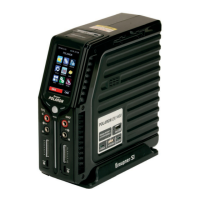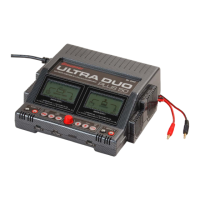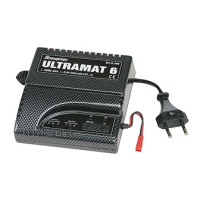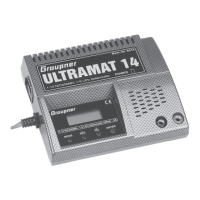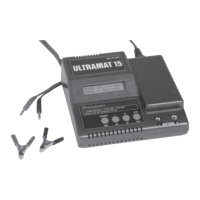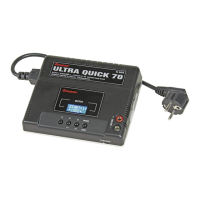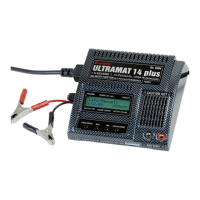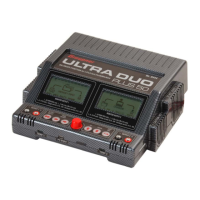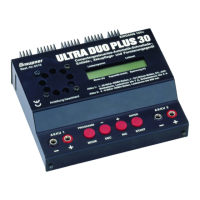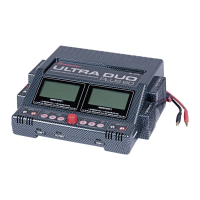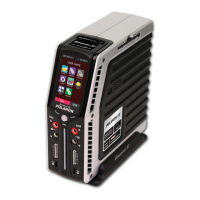
Do you have a question about the GRAUPNER Polaron EX and is the answer not in the manual?
| Brand | GRAUPNER |
|---|---|
| Model | Polaron EX |
| Category | Battery Charger |
| Language | English |
Provides contact details for customer support, online resources, and A/S support center.
Introduces Box Contents, Safety Precautions, Specifications, and Control Identification.
Essential safety rules for operating the charger and handling batteries to prevent hazards.
Specific safety advice for handling various battery types and preventing damage or fire.
Covers power source, display type, and battery compatibility for the charger.
Lists charge/discharge currents, balancing, USB, PC comms, dimensions, and weight.
Identifies Mini USB, DC Input, and cooling fan on the charger's top and back.
Details front/right panel components like TFT screen, LEDs, sockets, and ports.
Explains navigation buttons and provides an overview of menu items.
Covers battery connection, input power setup, and main/profile page operation.
Covers viewing battery parameters, editing names, and setting up charge for LiPo/Lilon/LiFe.
Configuration for charging NiCd/NiMH and Pb batteries.
Explains settings like Cut-Temp, Peak Sens, Voltage, Current for LiPo, NiCd/NiMH, and Pb.
Illustrates the charging process and how to select charge modes and delay times.
Explains specific charge modes like Normal, Linear, CC/CV, Fast, and Store.
Describes the process for checking battery health and confirming cell count.
Shows the discharge display, parameters, and controls for setting current.
Explains how to select discharge modes for various battery types.
Details discharge processes and lists available modes for different battery types.
Explains specific discharge modes applicable to LiPo, Lilon, LiFe, NiCd, NiMH, and Pb batteries.
Introduces cycle pages for various battery types and their charging/discharging processes.
Explains parameters for charge/discharge cycles, including direction and delays.
Covers charge mode selection, delay time, and operation modes per battery type.
Describes the process for checking battery cell count within the cycle mode.
Introduces the balance mode and its functionalities for LiPo, Lilon, LiFe batteries.
Explains the different balance modes (1, 2, 3) and manual/auto settings.
Instructions on how to access the data view mode and its three view modes.
Details the four user setup modes for configuring various charger settings.
Shows examples of settings like Date/Time, Alarms, User Name, and Language.
Instructions for testing servos and brushless motors using the MISC menu.
Details on setting up and testing brushed motors.
Explains the break-in process for motors, including voltage and time settings.
Details programming motor cycles and testing with voltage and current parameters.
Instructions for using the battery warmer to optimize battery performance in low temperatures.
Details on using the tire warmer for competitive track advantage.
Instructions for connecting and programming ESCs using telemetry.
Details how to program ESC settings and view data via the telemetry terminal.
Explains how to access and perform factory data initialization.
Guides users through the process of calibrating the touch screen.
Instructions for upgrading charger firmware and slave board software.
Procedure for testing the balance port functionality.
Explains errors related to input voltage and battery connection issues.
Details errors related to output shorts, battery/internal temperature, and sensors.
Addresses problems with the charger not turning on or recognizing batteries.
Solutions for low battery voltage after charging and incomplete charging.
Safety advice for NiCd/NiMH, Pb, and Lithium batteries.
Detailed advice on handling Lithium batteries, preventing shorts, and proper disposal.
Lists KC/CE certifications and guidance on responsible electronic equipment disposal.
